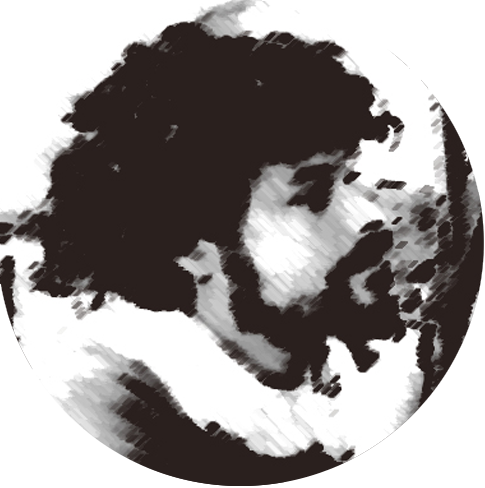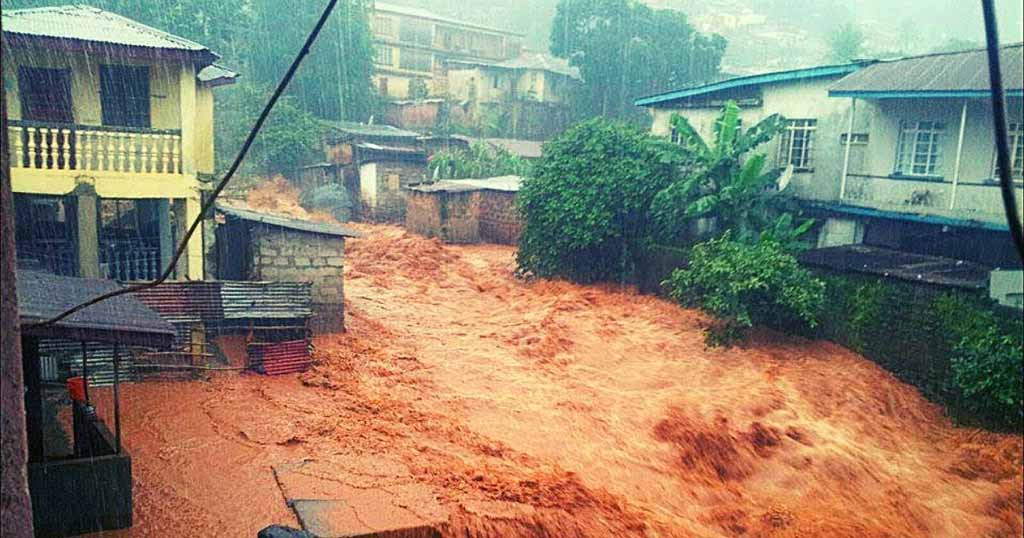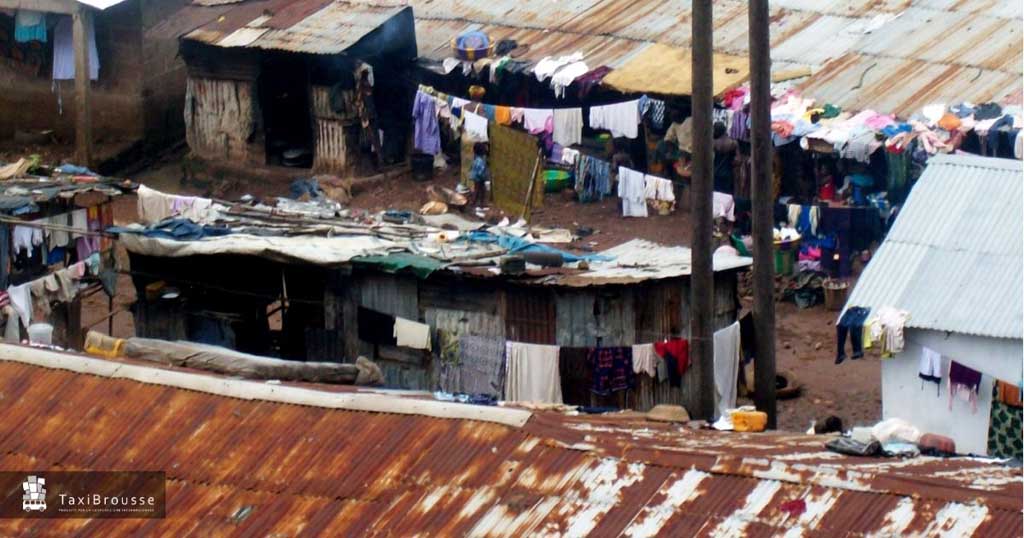During last rainy season, two big floods have hit the city of Freetown, inundating many urban neighbourhoods and making at least ten victims.
Nothing new: the effects of decades of deforestation, lack of planning, indiscriminate consumption of land all add up to a complex geographical context: a city of almost two million inhabitants squeezed between steep sloped and the sea, and lashed by heavy rains for four months each year.
A fragile city, chronically poor in infrastructure and defence tools therefore even more exposed to the disastrous effects of climate change, such as the tremendous landslide that hit the Southern periphery of the city on the night of August 14th 2017, burying dozens of houses and hundreds of people.
A city which has just, dramatically late, started to question itself on themes such as risks prevention and mitigation, long analysed in the academic context, but always forgotten or trivialized by local and national political agendas.
Initiatives of risks mitigation and environmental enhancement
The election of the new mayor of Freetown Yvonne Aki-Sawyer on March 2018 has marked a notable change in the way of administering the city.
Indeed, for the first time, the Freetown City Council prepares a well-structured strategic plan, with clear objectives, concrete tools and, above all, time horizons and solutions for economic coverage.
After more than ten years since the state decentralization reform, a dramatic power void, with ministries not fully competent in certain fields (planning, land use, waste management and environment) and local entities still unprepared to manage complex and strongly intertwined responsibilities, is finally filled.
The plan promoted by Sawyer focuses on the improvement of the city’s environment, on risks mitigation and the consequent reinforcement of the city’s resilience, and it has been nominated “Transform Freetown”.
A transformation that is more urgent and necessary than ever, but that will hardly be reached within the expected time, due to the scarcity of infrastructure and certain endemic problems.
The initiatives of Transform Freetown
The very ambitious (not to say utopian) programme “Transform Freetown” is therefore a series of concrete initiatives that aims to radically modify the city within a time horizon of some years, generally until 2022, ending year of the current administration’s mandate.
The plan is divided in four macro-areas of intervention named Clusters, each of them being linked with entities, international or national organizations that will contribute to their development: Resilience, Human Development, Healthy cities and Urban mobility.
While several objectives linked to traffic, a more inclusive education or basic healthcare can certainly be at hand, others such as the construction of 5000 low-cost houses or the 50% increase of trees in the city will be hard to reach.
However, it seems like the most utopian objective is the one that would guarantee the fulfilment of most of the others, which is the reform of the municipal taxes collection (nowadays being made in a quite casual way from tax collectors around the city), reducing tax evasion and quintupling revenue.
Despite the excessive optimism, Transform Freetown represents a significant turning point for the city, especially for what concerns the themes of resilience and risks mitigation, tackled in a systematic and concrete way for the first time.
The first interesting intuition is the promotion as main drivers of change of the 48 wards: the administrative districts in which the city is divided.
Each ward is indeed affected by activities of mapping, risks and priorities identification and the inhabitants have the direct responsibility of spreading and applying best practices of resilience and risks mitigation in their respective communities.
These concrete prevention best practices, realized by the residents’ community in collaboration with teams of municipal experts and the army are called “Flood Mitigation Activities”.
The Flood Mitigation Activities
The flood mitigation activities are a series of activities aiming at reducing the hydrogeological risk in the short-medium term, with the active participation of the residents.
Freetown’s conformation, the slopes’ deforestation and the poor waste management determine disastrous floods during rain season, caused by the overflow of clogged creeks or by the insufficient capacity of drainage network.
A preliminary mapping and historical analysis activity led to identify the riskiest areas in each ward.
The activities, realized by teams made up of workers and municipal experts, soldiers and citizens of the neighbourhood have foreseen ordinary and extraordinary maintenance works of the drainage networks, by cleaning the channels, which are often improperly used as landfills, from trash and earth.
The cleaning initiative also affect several road bridges: indeed, bridges’ arches are insufficiently wide for seasonal streams flow and constantly clogged with waste or debris, and therefore have historically been the riskiest spots for floods in entire neighbourhoods.
These preventive measures, together with excavation of new channels, become more intense when rain seasons begin.
On the other hand, during the season itself some teams of experts and soldiers are active in emergency interventions either signalled by residents or aiming at restoring channels drains as soon as possible after floods. This is a fundamental activity to avoid disasters caused by daily rains in the summer from occurring over and over again.
An additional initiative that has been put in place for the environmental enhancement is the reforestation: if the objectives of increasing green areas by 50% by 2022 and of planting 20.000 during this year appear to be too optimistic, this initiative still represents a historical turning point, after decades of indiscriminate and uncontrolled trees and shrubs cutting.
Therefore, Sierra Leone as well follows the trail of mass reforestation initiatives such as the ones recently promoted by the Ethiopian government, or the Great Green Wall that crosses the continent from Senegal to Eritrea.
The cleanest zone competition
An very interesting incentive to participation is that of the Cleanest Zone competition: a challenge among neighbourhoods of the city on which one can obtain the greatest improvement on waste management and environmental and urban decor protection.
Every district is invited to organize a punctual waste collection in line with the municipality’s requests, as well as to remove illegal landfills and to contribute to the streets’, sidewalks’ and public spaces’ cleanliness.
Operations of districts’ embellishment are also incentivized, as well as small interventions for the improvement of public spaces and landscape.
The initiative aims at directly involve citizens in taking care of their neighbourhood, discourage indiscriminately waste discarding and raise awareness on the social control over incorrect or dangerous behaviours.
Those who are caught at abandoning solid or liquid waste in public areas or illegal landfills are indeed not only getting fined, but also causing the disqualification of the entire neighbourhood from the competition. Every six months, the winning district is awarded with night lighting systems, a drinkable water fountain, paving to a stretch of road and scholarships for the children in need.
The communication
Finally, another fundamental aspect about the new Freetown’s administration is communication.
Indeed, the change in the administration has also corresponded to a shift from inaccessible or sadly obsolete institutional websites and semi-abandoned social pages to modern, engaging and, at times, aggressive communication.
Not a day goes by without updates on the goal achieved or on new objectives, and the #transformfreetown hashtag starts to be omnipresent on social media.
This communication activity is responsible for an increase in the engagement and the spread of best practices among an averagely young population that is more and more connected on social media.

The picture of the mayor herself, often portrayed under the rain or with her feet in the mud coordinating emergency aid, represents a huge step forward compared to a vision of politics (and politicians) as distant from the daily issues or only present when the election deadline is approaching.
A politics of leading by example that can certainly make a difference in involving citizens to do their part for the transformation of the city.
The results
After a first encouraging year, when some coastal slums hadn’t faces floods for the first time in the last decades, the 2019 rain season has damped the excitement: two big floods at the beginning and in the middle of August hit the city, destroying dozens of houses and properties and causing ten victims.
The situations sadly looks unchanged, even if Umaru Fofanah, one of the most influential journalists in Sierra Leone, bitterly notes, while talking about the 2019 floods: that “since 15 years, every rain season, I write exactly the same articles, to the point I could repeat the ones published the years before and no one would notice”.
Are the Floods Mitigation Activities useless?
Absolutely not.
If on one hand it’s undeniable that the initiatives put in place are not sufficient to solve a problem caused by factors that stratified in decades of uncontrolled urban growth, on the other hand without these interventions the damages’ (and victims’) esteem would have certainly been higher.
Apart from the poor results that measurable by now, the significant revolution that Transform Freetown represents for the city and its residents is undeniable.
From a diffused apathy towards problems (not always wrongly) perceived as too big to be faced, they have moved to a concrete and pragmatic approach, that could positively affect many urban issues in the long term, if supported by participation.
At the same time, the attention payed on the role of the micro-communities in the urban structure, the active participation of the citizens in the improvement of their neighbourhood, the incentive for the diffusion of best practices through the competition among districts, the administrators’ leading by example or the race towards a common purpose are practical and creative solutions that can also inspire our cities, in a perspective of a more sustainable and participatory future.

Federico Monica
Architect and Urban Planner, Ph.D. in Urban and regional planning. Founder of Taxibrousse studio, specialized in informal settlements assessment, slum upgrading strategies, low-cost and low-tech building processes.
Share this page!
Featured posts
English translation by Carla Procida
TaxiBrousse is a design and consultancy studio for international development, we works in the fields of engineering, architecture, urban planning and environmental protection.
Follow us




